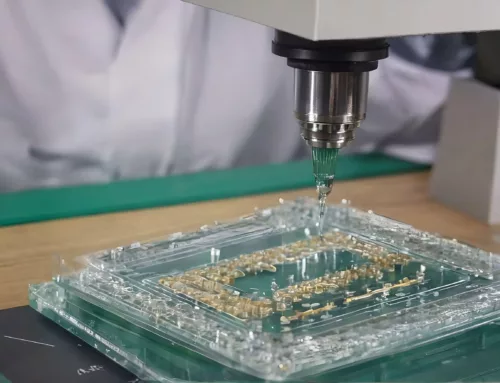
The world of academia in its ivory tower protected by a traditional bastion, and the bustling innovative industry, seem like two parallel universes, each with their distinct objectives, methodologies, and priorities. Yet, there exists immense potential for synergy between these realms that, when harnessed effectively, could drive innovation, spur economic growth, and create a more profound impact on society. It is 2023 already, with AI and the blockchain’s inevitable full integration in every corner of human society and development. It would be a good time to make some changes and finally collapse the gap between academia and industry, fostering a seamless unhindered flow of knowledge, data, and ideas that could lead us into a brighter and more sustainable future.
The Divide
The overarching impact of the division worldwide in this case between academia and industry extends beyond mere boundaries, influencing the trajectory of progress in complex and profound ways. The divide between academia and industry has been a longstanding phenomenon, with each side viewing the other skeptically. Academics may feel disconnected from real-world research applications, while industry professionals may perceive academia as disconnected from practical needs. This disconnect of parallel worlds can lead to a lack of collaboration, underutilization and shelving of research findings, and slow adoption of cutting-edge technologies and practices.
The consequences of this gap are not limited to stagnation, they have a far-reaching impact on society and its ongoing development. Many groundbreaking discoveries and innovations lie dormant in academic journals or don’t get published at all, and are never fully realized due to a lack of collaboration with industry experts. Similarly, the industry may miss out on the potential benefits of novel research, leading to missed opportunities for growth and development affecting society as a whole.
This persistent divide leads to missed synergies, where the potential fusion of inventive concepts and practical applications is foiled. This lost potential hinders the creation of novel solutions capable of effectively addressing multifaceted challenges and as a repercussion, inhibiting the pace of technological advancement. Research breakthroughs promising to reshape industries often remain confined within academic circles, impeding the timely development and deployment of cutting-edge technologies in real-world contexts. The final result is an economic opportunity loss, as the research fails to transition into viable products and services. The stagnation denies economies the chance to harness the full spectrum of intellectual and innovative potential, thereby hindering overall economic growth.
Promoting Collaboration and Knowledge Exchange
To unleash the boundless potential of academic research and its tangible applications, a transformative approach is needed – one that transcends the archaic conventional barriers and gradual methods of developing cooperation and knowledge transfer among academia, industry, governments, regulatory bodies, shareholders, investors, lawyers, and patents. This novel paradigm rejects the confines of present fear-driven dynamics, profit-centric motives, ownership disputes, and the curtailing regulations that often impede progress. Instead, it envisions a collaborative global closed-looped ecosystem rooted in boundless curiosity, shared prosperity, open innovation, and a collective pursuit of advancing humanity’s frontiers. This landscape encourages the free flow of ideas, dismantles silos, and empowers stakeholders to collectively shape a future where the synergistic fusion of expertise leads to breakthroughs that transcend the limitations of today’s fragmented landscape of egos.
Now imagine a scenario where the boundaries between science and industry blur and become one, giving rise to a seamless fusion of knowledge creation and real-world application. In this paradigm, academia becomes the bustling hub of not only intellectual exploration but also hands-on experimentation. Researchers, instead of just publishing papers, actively collaborate with engineers and entrepreneurs to turn theoretical breakthroughs into practical innovations. Laboratories buzz with the energy of inventors working side by side with manufacturers, ensuring that the latest discoveries are swiftly incorporated into cutting-edge products.
In this harmonious blend, academic institutions morph into innovation powerhouses, producing not just ideas but also prototypes and market-ready solutions. Students benefit from exposure to real-world challenges, gaining a holistic education that encompasses both theoretical understanding and practical implementation. Meanwhile, industries thrive as they seamlessly absorb the latest scientific advancements, swiftly integrating them into their processes and products. This integration could also pave the way for a more agile and adaptive regulatory framework. As academia and industry intertwine, scientists and entrepreneurs become key players in shaping policies and regulations. This collaborative approach ensures that innovation rules remain in sync with the rapid pace of scientific progress and technological evolution.
A new era of unprecedented progress
In embracing this transformative paradigm. The divide between academia and industry could finally dissolve, paving the way for a new era of unprecedented progress. The vision of a seamless fusion between knowledge creation and real-world application holds the potential to unlock a repository of untapped innovations. As the boundaries blur into one, researchers and industry professionals would stand shoulder to shoulder, ushering in an age where groundbreaking ideas swiftly evolve into solutions ready to enrich society and advance human well-being and progress. This unified approach not only accelerates technological advancement but also nurtures a new generation of thinkers who are adept at both theory and practice.
The traditional barriers fade, and in their place emerges a thriving closed-loop ecosystem where curiosity fuels innovation, and shared technological prosperity becomes the driving force. As academia and industry merge, regulatory frameworks adapt to the evolving landscape, ensuring that the pace of change is met with agile knowledgeable governance.
In this restructured future, academia and the dynamic realm of industry will become interconnected, forming a bridge and becoming one. This transcends the limitations of the past. The potentials are boundless, the possibilities endless, and the impact profound. By embracing this convergence, we embark on a journey toward a better, more sustainable future where the symbiosis between academia and industry fuels progress, enriches societies and reshapes the world in ways we can only begin to imagine.




